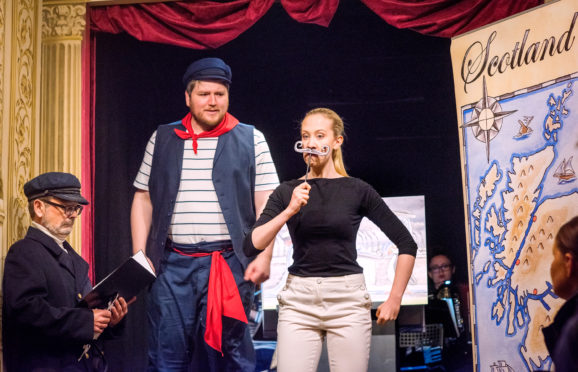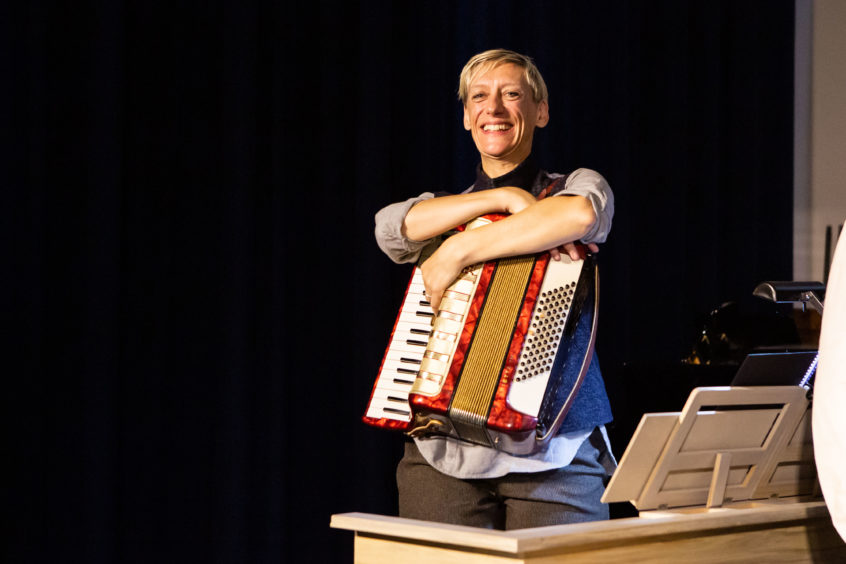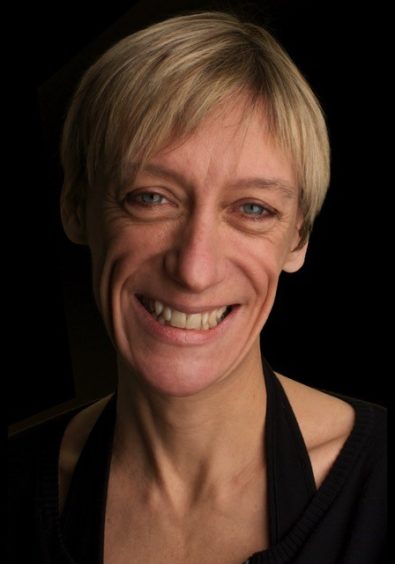
A new pop-up show from Scottish Opera will tell the story of the River Clyde as live performances return after five months.
The Song of the Clyde, inspired by the Kenneth McKellar classic, is one of a programme of outdoor, socially-distanced performances starting next month.
Audiences are invited to journey back in time, tracing the history of 110 miles of the Clyde from ancient times to the present day.
Songs and stories tell of the generations who lived and worked along its banks, as it winds a path from its source high in the hills of South Lanarkshire down through the Clyde Valley to Glasgow and further onwards to the ‘tail of the bank’ near Greenock.
“Scottish Opera took a punt on doing rehearsals ahead of time, and it’s just worked out like a little dream,” composer Karen MacIver says.
“We have a pop-up trailer that we can take out on the road. Even though we’re just edging into Autumn, there’s still space for a summer programme to be presented outdoors.”
The production is the final part of a trio of community operas launched over the past few years.
A 25-minute adventure, Karen took inspiration for the part of the show set in the bustling heyday of Clyde shipbuilding from Sting’s The Last Ship, which tells the story of the glory days of industry on the Tyne.
It also takes a timely look at the Clyde’s role in slavery in a family-friendly, accessible performance.
Karen said: “We do a little quiet moment and talk about the history of trade on the Clyde and slavery. It really has become important in these past few months, it preceded the Black Lives Matter momentum but is absolutely of its time.
“It really acknowledges why the Clyde became important. It’s not dark and dismal, but very much a settled moment in the score where we talk about things like the sugar refinery in Greenock.
“All my life I’ve driven past the Tate & Lyle factory with no recognition of why it would be there. These things are addressed and then we go back into the buoyancy of the rest of the show.”
An added bonus to the tale Karen found out while composing it alongside writer Allan Dunn, was that a Scottish Opera colleague had their own link to the original song.
The late Ian Gourlay, who wrote The Song of the Clyde, is the father of Morna, who works on reception.
“Ian wrote it and Kenneth made it famous,” Karen said. “He was a classical singer and hit it big time with the White Heather Club. It’s like the Go Compare advert, the guy sings and ends up in a whole world that he never expected!
“The framework of the piece is to have the song playing as the audience come in, and then off it goes on its own journey as well.”
Karen hopes that the pop-up tour will help take a step forward towards a more normal way of consuming live performances.
The sense of community, she said, is something that people are really missing.
“It’s been really weird, at 7pm of an evening a lot of us would be heading out somewhere, whether it was the cinema, theatre or something social.
“With the change to that whole lifestyle, it’s really very difficult for a lot of people. It’s the same with sports as well, that feeling of community.
“It cannot be addressed on a Zoom call. Having the experience of any kind of live music or art in any form is really important for people’s wellbeing.
“Everything digital has its place, but the acoustic world of just being there and witnessing the joy of theatre with other people needs to come back.”
Luckily, the show was mostly ready to go before lockdown hit. The music was prepared and story written, but rehearsals would have to go ahead under strict restrictions.
Performers and directors had to remain in their own marked-out pods in limited numbers at studio space within the old Rolls Royce factory at Hillington.
Karen said: “Sometimes the rehearsals were a little bit like me shouting in a megaphone. It was fine, we were in a large room and we were restricted to eight people.
“At first it felt a bit alien, a bit austere. The chat over a coffee didn’t happen and the general hubbub in the room became quite silent, people would sit and read their phones or rehearse their music to themselves.
“It became a little bit more silent than you normally expect. When we got started, after an hour or two it was ok, it was the new norm. We got through things really well.”
One thing that the production will have to adapt to is being outdoors, something the rehearsals haven’t factored in.
“Outdoor gigs are always hilarious,” Karen said, “especially if the musicians need to have music. I remember once playing in Stranraer Harbour. My music ended up in Ireland, the wind swept it away!
“For the musicians who need to read from music they can use iPads. The singers and the storytellers have it memorised and committed to the brain.
“I think for this one they’re also going to have to use some kind of PA system, just to try and confine the sound so it won’t disappear completely.
“That’s an unusual one for opera singers, they never use amplified assistance. This’ll be a unique one.”
The Song of the Clyde, Scottish Opera, visit www.scottishopera.org.uk

Enjoy the convenience of having The Sunday Post delivered as a digital ePaper straight to your smartphone, tablet or computer.
Subscribe for only £5.49 a month and enjoy all the benefits of the printed paper as a digital replica.
Subscribe © Sally Jubb
© Sally Jubb